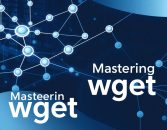The Digital Language That Powers the Internet
Imagine standing before an intricate architectural blueprint that defines how every digital experience is constructed. This is HTML—the foundational language that transforms abstract information into structured, interactive web experiences. As a seasoned expert in proxy technologies and web data extraction, I‘ve witnessed HTML‘s remarkable evolution from a simple markup language to a sophisticated framework that drives global digital communication.
Origins: The Birth of a Digital Standard
The story of HTML begins in the early 1990s, when Tim Berners-Lee, working at CERN, recognized the need for a standardized method of sharing scientific documents across computer networks. What started as a modest markup language has since become the universal standard for web content structure, powering billions of websites worldwide.
Understanding HTML: More Than Just Code
HTML (HyperText Markup Language) is not merely a programming language—it‘s a structured communication protocol that tells web browsers exactly how to interpret and display content. Think of it as the DNA of web pages, providing the essential genetic instructions that determine how information is organized, presented, and interacted with.
The Fundamental Architecture of HTML
At its core, HTML uses a system of tags—special instructions enclosed in angle brackets—that define different types of content and their relationships. These tags create a hierarchical structure that browsers interpret, rendering everything from simple text paragraphs to complex interactive interfaces.
A Typical HTML Document Structure
<!DOCTYPE html>
<html lang="en">
<head>
<meta charset="UTF-8">
<title>Web Page Title</title>
</head>
<body>
<header>Website Header Content</header>
<main>
<article>Primary Page Content</article>
</main>
<footer>Website Footer Information</footer>
</body>
</html>HTML from a Web Scraping Perspective
As a proxy IP and anti-scraping expert, I view HTML through a unique lens—not just as a markup language, but as a sophisticated data extraction framework. Every HTML document represents a structured dataset waiting to be intelligently parsed and analyzed.
Parsing Strategies for Effective Data Extraction
Web scraping requires a deep understanding of HTML‘s structural nuances. Successful extraction depends on:
- Precise element identification
- Understanding DOM (Document Object Model) hierarchies
- Navigating complex nested structures
- Handling dynamic content generation
Technical Evolution: HTML Versions Explained
HTML has undergone significant transformations since its inception. Each version introduced groundbreaking features that expanded web capabilities:
HTML 1.0 to HTML4: The Early Years
The earliest HTML versions were rudimentary, focusing primarily on basic text formatting and hyperlink creation. Websites were static, with limited interactive capabilities.
HTML5: A Technological Revolution
HTML5 represented a quantum leap in web technology. Introduced in 2014, it brought unprecedented features:
- Native multimedia support
- Advanced form handling
- Semantic page structuring
- Enhanced graphics capabilities
- Improved performance metrics
Security Considerations in HTML Extraction
From a proxy IP expert‘s perspective, HTML extraction isn‘t just about retrieving data—it‘s about doing so securely and ethically. Modern web scraping requires sophisticated techniques that respect:
- Website terms of service
- Rate limiting protocols
- Anti-bot detection mechanisms
- Legal and ethical boundaries
Intelligent Extraction Techniques
- Rotating IP addresses
- Implementing realistic browser headers
- Managing request intervals
- Using sophisticated user-agent spoofing
Practical Implementation: HTML in Real-World Scenarios
Let‘s explore how HTML powers various technological ecosystems:
E-Commerce Platforms
Online shopping websites rely extensively on HTML to structure product catalogs, pricing information, and user interaction flows. Each product listing represents a meticulously structured HTML document containing critical metadata.
Data Journalism and Research
Investigative journalists and researchers use advanced HTML parsing techniques to extract insights from complex web documents, transforming raw online information into meaningful narratives.
Future Trajectories: HTML‘s Continuing Evolution
As web technologies advance, HTML continues to adapt. Emerging trends suggest:
- Greater AI integration
- Enhanced accessibility features
- More sophisticated semantic structures
- Improved cross-platform compatibility
Conclusion: HTML as a Living Technology
HTML is far more than a markup language—it‘s a dynamic, evolving communication protocol that reflects humanity‘s increasing digital sophistication. From its humble beginnings to its current complex form, HTML remains the invisible architecture that makes our digital world possible.
Sources and Further Reading
- W3C HTML Specification: https://www.w3.org/TR/html52/
- Mozilla Developer Network HTML Guide: https://developer.mozilla.org/en-US/docs/Web/HTML
- WHATWG HTML Living Standard: https://html.spec.whatwg.org/
- Web Hypertext Application Technology Working Group: https://whatwg.org/
About the Author
With over a decade of experience in proxy technologies and web data extraction, the author brings a unique technical perspective to understanding HTML‘s intricate world.





